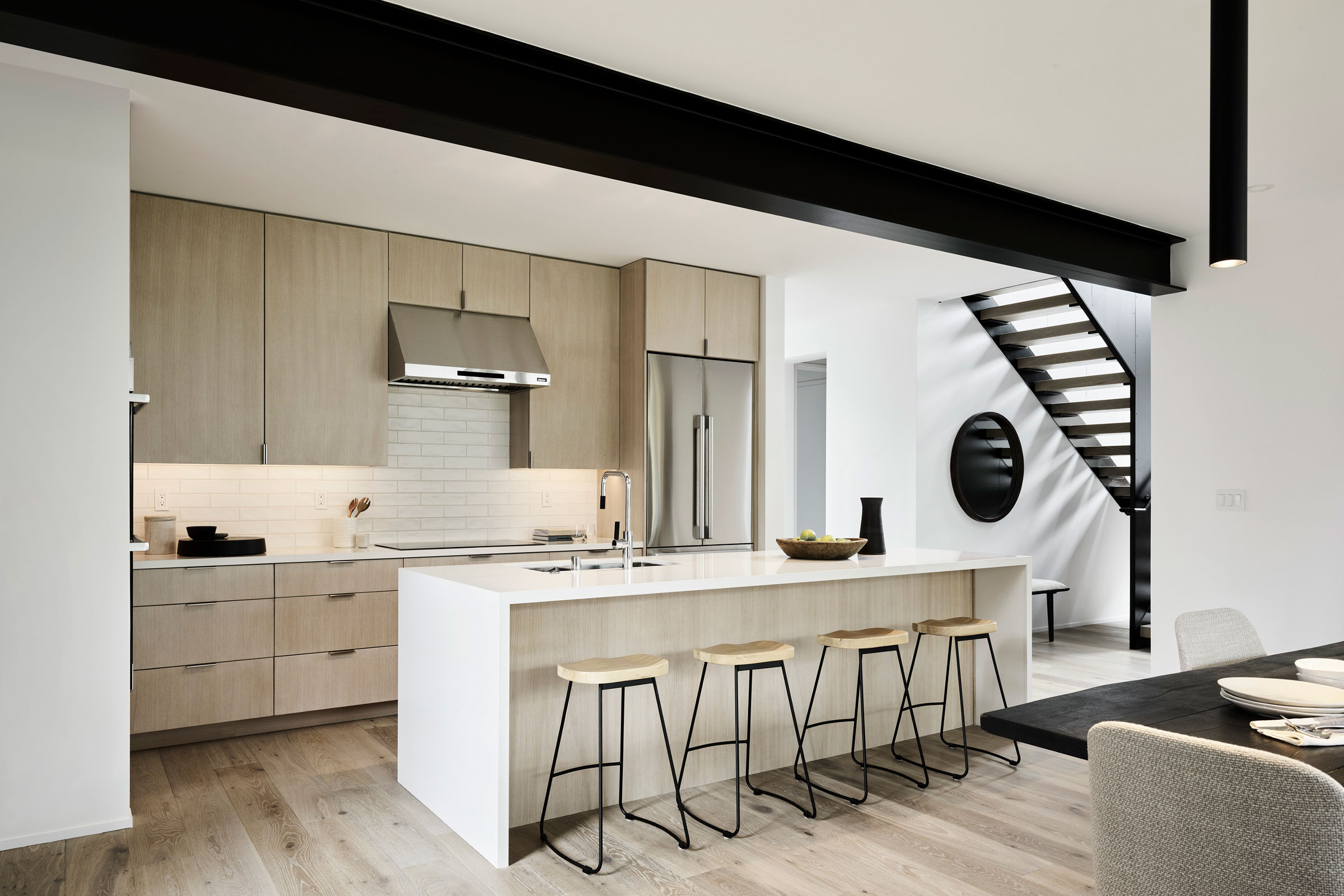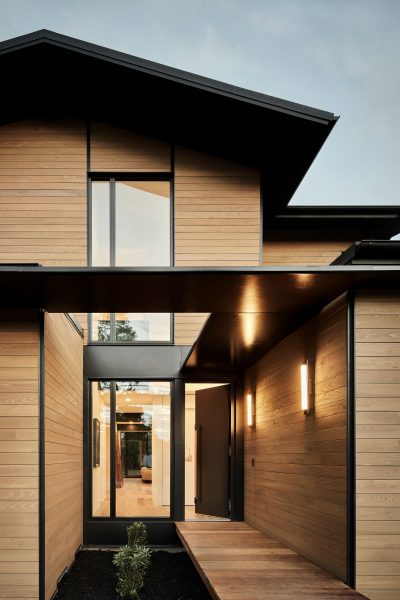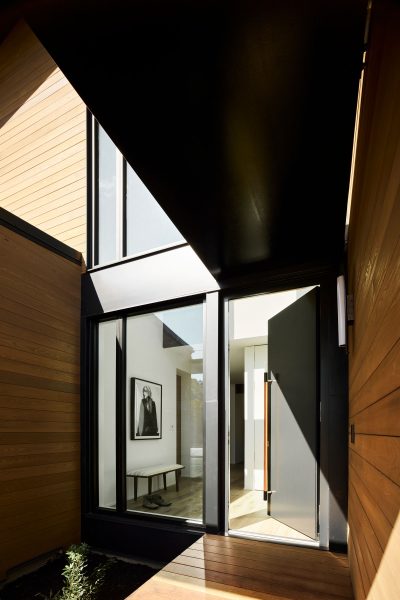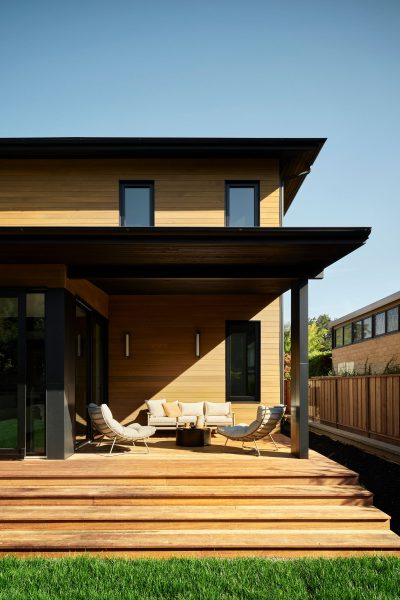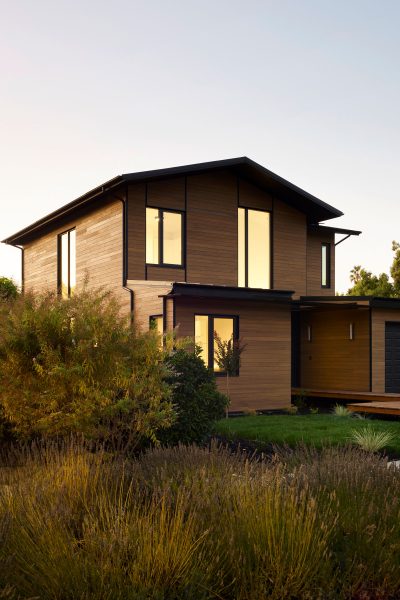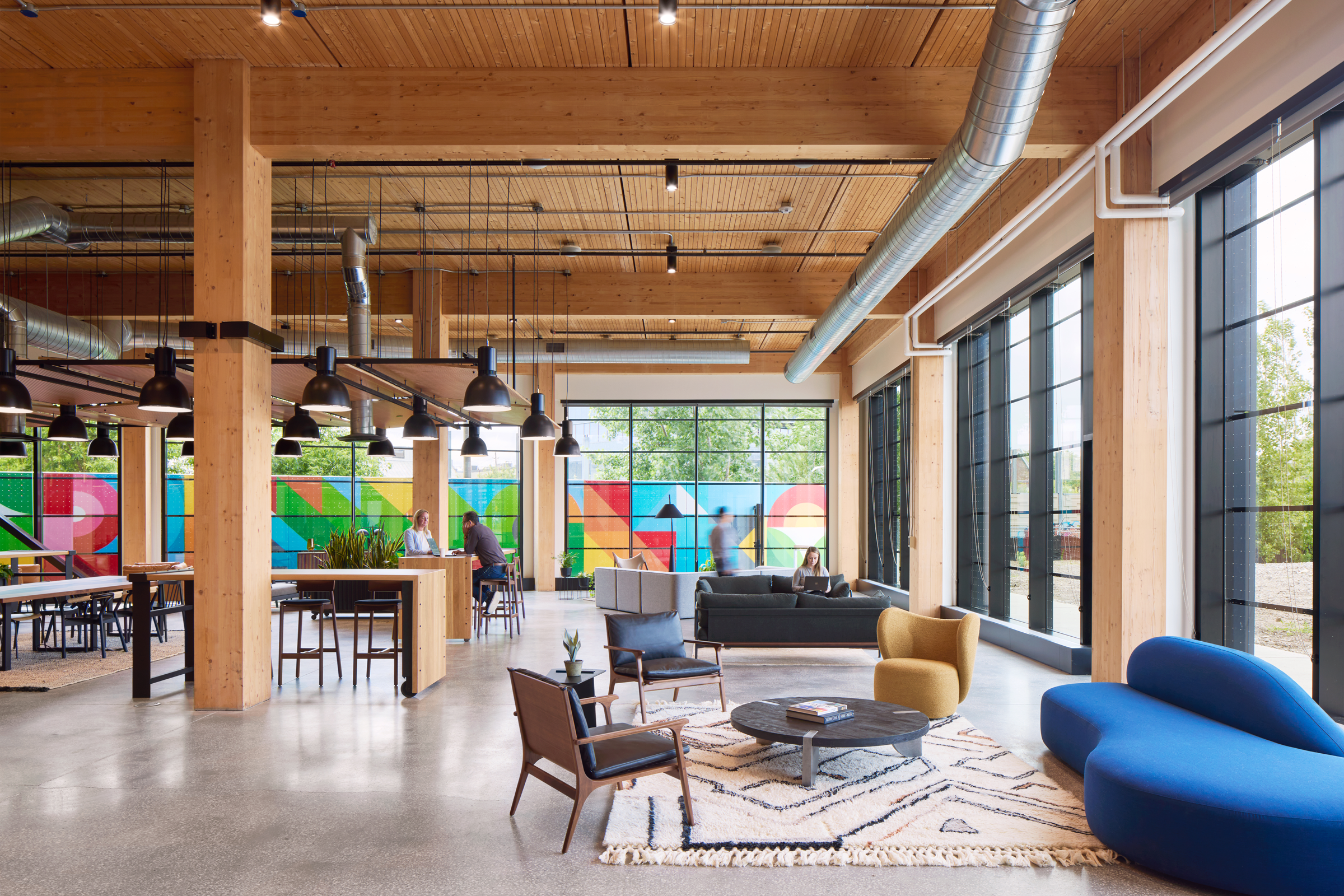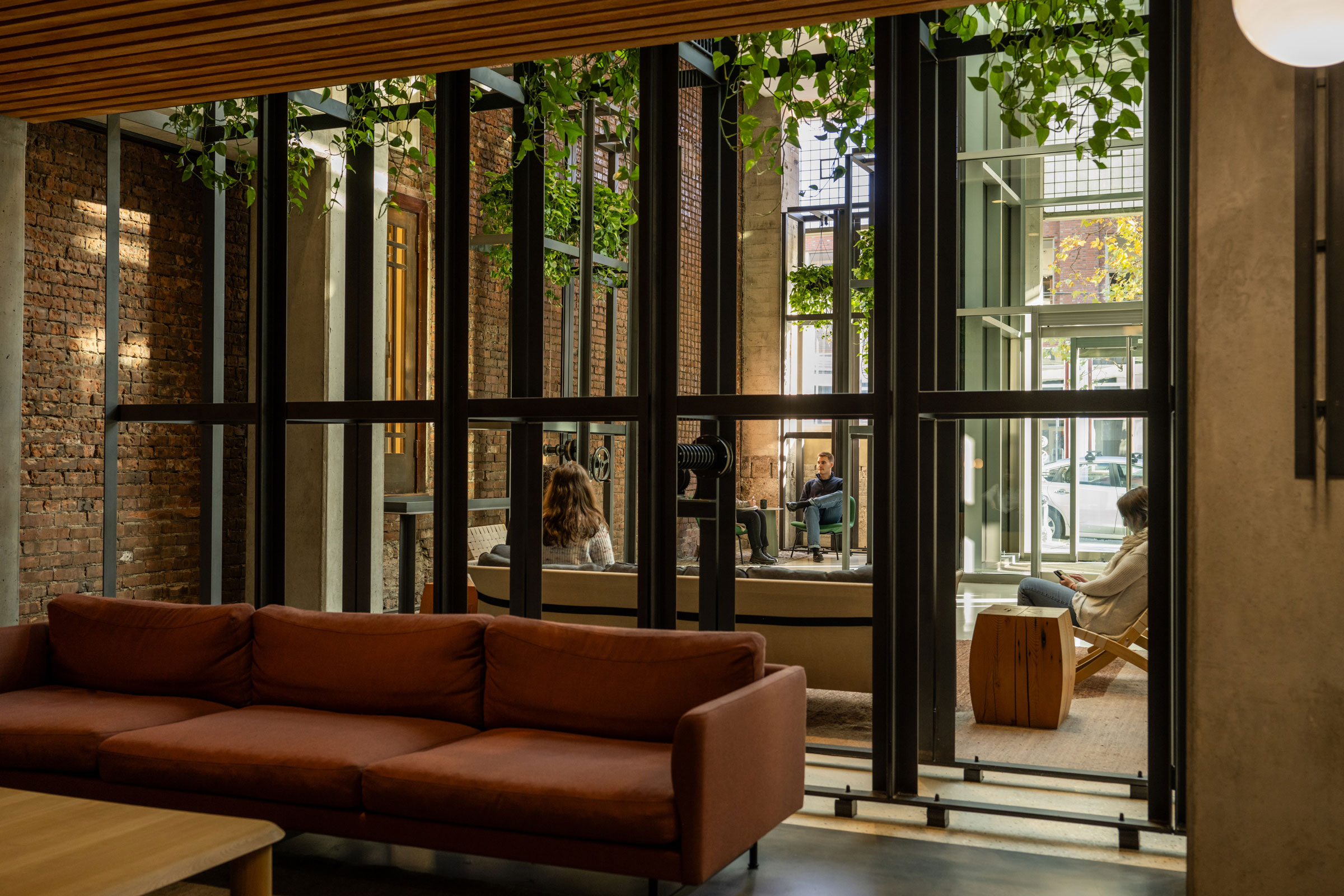Story at a glance:
- Aro Homes proposes a new era for sustainable residential design with fast, beautiful, carbon-negative homes.
- Designed by Olson Kundig, the first Aro homes in Mountain View were delivered in 90 days thanks to a hybrid offsite and onsite construction system.
- With extremely low embodied carbon and efficient systems throughout the home, Aro targets carbon neutrality in less than 20 years.
“A home is probably the single most important expensive product anybody ever buys, but unless you’re doing a custom home they aren’t built with the same intentionality, deliberateness, or thoughtfulness as other products, ” says Carl Gish. He and cofounder Simon Boag created Aro Homes to propose a new era for sustainable residential design with fast, beautiful, carbon-negative homes.
With the help of Olson Kundig architects, Aro has completed the first Aro Homes in Mountain View, California. The stylish and contemporary, single-family, infill homes suggest a new path for sustainable living, erected in only 90 says thanks to a hybrid offsite and onsite construction system.
Key Collaboration
Olson Kundig is known for blending human insight, environmental context, intuitive design, and beautiful aesthetics in its more than 50 years of experience in residential homes—mainly custom builds. “We saw the partnership with Aro as a chance to take some of the design experience, finishes, and approaches we’ve developed and make them available to a broader audience,” says Blair Payson, principal and owner at Olson Kundig. “It really is a reflection of Olson Kundig’s combined knowledge base.”
This expertise is what drew Aro to Olson Kundig. “We wanted an architecture partner who shared our passion for giving people the design and living experience we felt was possible,” Gish says. “The really important thing for us was Olson Kundig’s emphasis around sustainability and integration into the environment, connecting the families living in the home to the place where they’re actually living.”
Universally Appealing
- Photo by Matthew Millman, courtesy of Olson Kundig
- “We didn’t spend a lot of time looking for a LEED certification or Passive House rating. We focused on a very practical sustainability strategy,” says Carl Gish, cofounder of Aro Homes. Photo by Matthew Millman, courtesy of Olson Kundig
For Aro there is no single defined client: The home aims to appeal to as many people as possible. With ample design and market research, the team determined the right balance to be possible in a four-bedroom, 3,000-square-foot, open concept home utilizing a natural palette, clean lines, and flexible spaces.
Relatively contemporary, the home is designed to fit in with its surroundings. “You see a lot of big, imposing infill projects, maximizing every square inch of a lot. Aro tries to not do that. It’s trying to be a good neighbor for as many building types as possible,” Payson says.
Inside the Aro home, lines of sight lead to exterior views. “Creativity brings the magic to it and is essential to create the experience when you walk through the house. That’s what distinguishes the design that the Olson Kundig team created for us from any other spec home that’s out there,” Gish says.
Building to Code
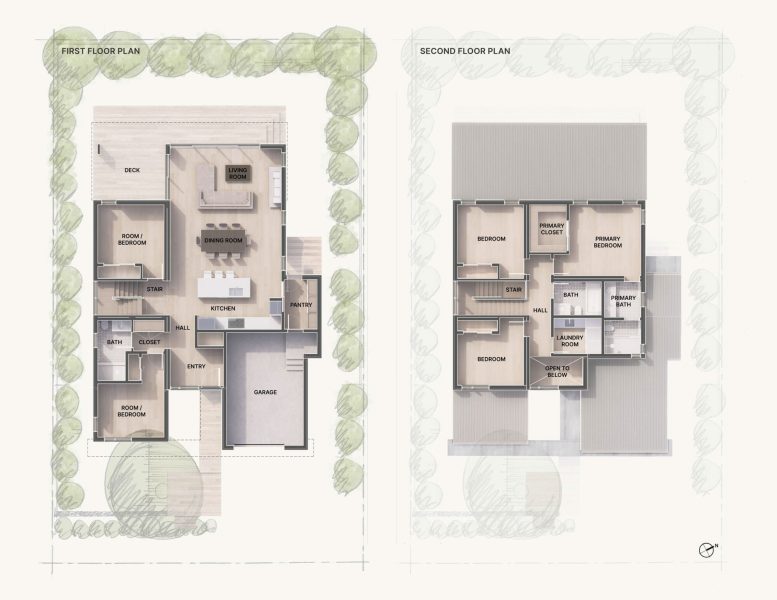
Aro Homes floor plans. Image courtesy of Olson Kundig
Because the home may be built on various sites in multiple cities, challenges emerged in ensuring adherence to local building requirements. The San Francisco Bay Area has dozens of jurisdictions, each with different zoning overlays and requirements. “We didn’t try to fit all of them, but there are probably up to 30 we were trying to comply with,” Payson says.
Figuring out how to maintain high design and material aspirations across many sets of requirements was complicated but rewarding. “Sometimes the best architecture comes from a tight framework and restrictions because it’s what you react against. This was the ultimate example,” Payson says.
Carbon Negativity
- “One of the things we struggle with as an industry is we have projected data about how the house or the building is going to perform, but you don’t always get actual data. But we get actual data from the Aro Homes and can track that against our goals. We’re able to see how the system’s doing and adjust it as needed in future iterations. That’s pretty unusual,” says Blair Payson, principal and owner at Olson Kundig. Photo by Matthew Millman, courtesy of Olson Kundig
- Photo by Matthew Millman, courtesy of Olson Kundig
Aro homes target what Gish calls “practical sustainability” with very low embodied carbon—about 75% less than comparable homes—and highly efficient systems that generate more energy than they use to achieve carbon neutrality down the line.
The process starts with utilizing better and fewer materials to construct the house—wood in place of steel or concrete, stacked plumbing, minimized conduit runs, and mineral wool insulation instead of fiberglass. The team was able to reduce the concrete in the foundation system by about 58%.
An industry-changing volumetric construction approach combining offsite and onsite fabrication shortens Aro’s delivery timeline from the industry standard 12 to 18 months to just 90 days. Because the house is built offsite, two-by-sixes are used in most of the walls, allowing for more insulation and Passive House–level R-values. The engineering team aims for at least one-sixteenth tolerance, which grants the home extremely low HERS ratings.
We’re doing this because we want to build better, more livable homes that are better for the environment and for the people who live in them.
Finally, efficient systems allow the home to create more energy than it uses through strategies like photovoltaic panels, heat pumps, high-efficiency HVAC, low-voltage lighting, and a smart electrical panel to monitor and manage the electrical load from your phone.
“All the materials are accessible and available; it’s just a matter of making it work with the cost per square foot goals,” Payson says. “On average throughout the year the home gives 2,500 kilowatts/hour back to the grid, about 20% more energy than it uses each year. In about 18 to 20 years that offsets all that carbon in the original build.”
“Eventually we’d like to get it down to 10 years. We’re looking at helical piles and other foundations that might reduce the concrete usage, which is the worst offender for us right now,” Gish says. And in fact, the projected neutrality goal lowers even as Aro and Olson Kundig get real-time data from the homes.
Ongoing Iteration
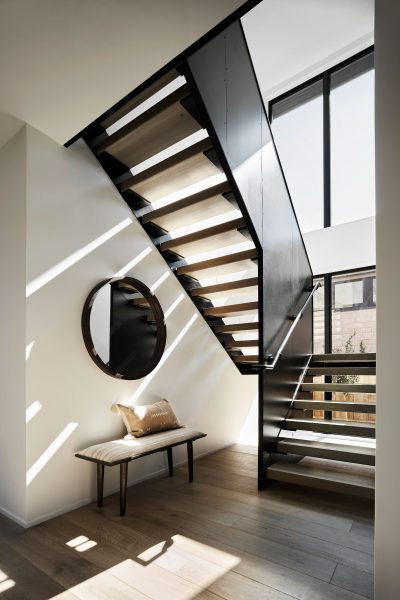
“It was designed primarily as an amazing place to live with amazing sight lines and flows,” says Carl Gish, cofounder of Aro Homes. Photo by Matthew Millman, courtesy of Olson Kundig
Typically every home is basically a prototype. “You draw the set of plans and then they go into a drawer under a bed. We have the whole home 3D modeled down to every staple, screw, wire, conduit, and we can update that. It’s a pretty robust experience that allows for and supports continuous improvement,” Gish says.
Aro homes only exist in the Bay Area for now. Smaller and larger variations and a junior ADU version are on the horizon, and Aro has its sights on new markets—beginning with Southern California and Los Angeles as the city rebuilds from the early 2025 fires. “We will be thinking about what things can and should be different by market, and what things make sense to keep consistent,” Gish says. Conquering a new market also means solving a new puzzle of layering jurisdictions’ codes and regulations. “It will be a different house.”
But the ongoing process is, essentially, the point. “We’re doing this because we want to build better, more livable homes that are better for the environment and for the people who live in them,” Gish says. “You don’t have to choose between building homes that are profitable and appealing to a broad audience and building homes that are green and sustainable. It can be both.”

